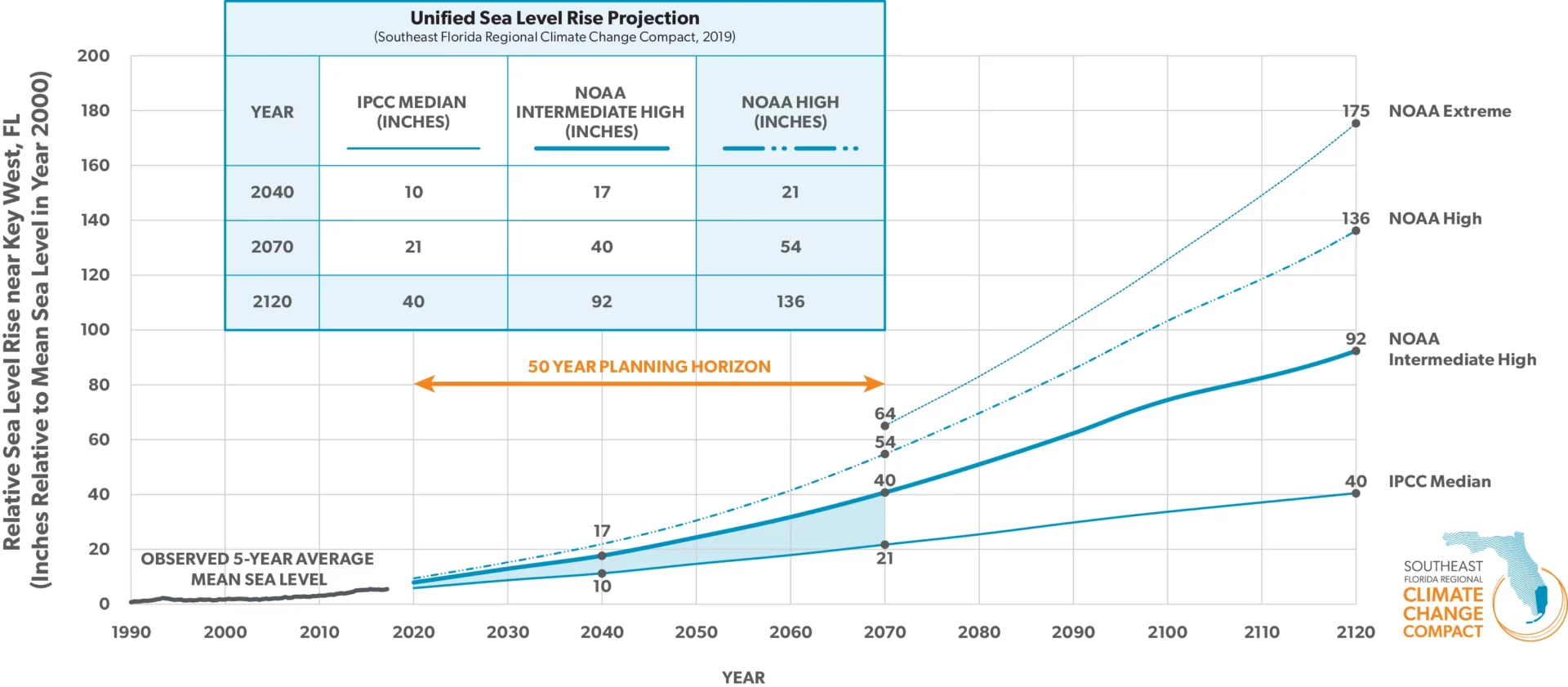
Climate Indicators
Sea Level Rise
Observed Sea Level Rise
Based on the limited number of National Oceanic and Atmospheric Administration’s (NOAA) tide gauges within the Southeast Florida region, and varying records of observation from those gauges, the observed sea level is rising in the range of one to two inches per decade, with a systematic increasing trend of sea level rise across the Compact region. As an example, based on the previous five-year average, the observed sea level rise at the Key West tide gauge from 2000 to 2023 is about six inches. In the period from 2012 to 2023, there was a rapid increase in monthly sea level rise along the Southeast Florida coast. Scientists have not concluded definitively what is causing this observed increase, or whether it is a long-term trend or multi-decadal variability. Observed sea level rise has and will continue to exacerbate the severity and duration of various flood hazards, including King Tides and hurricane storm surge, and negatively impact stormwater drainage infrastructure.
Miami-Dade County, Observed Sea Level Rise
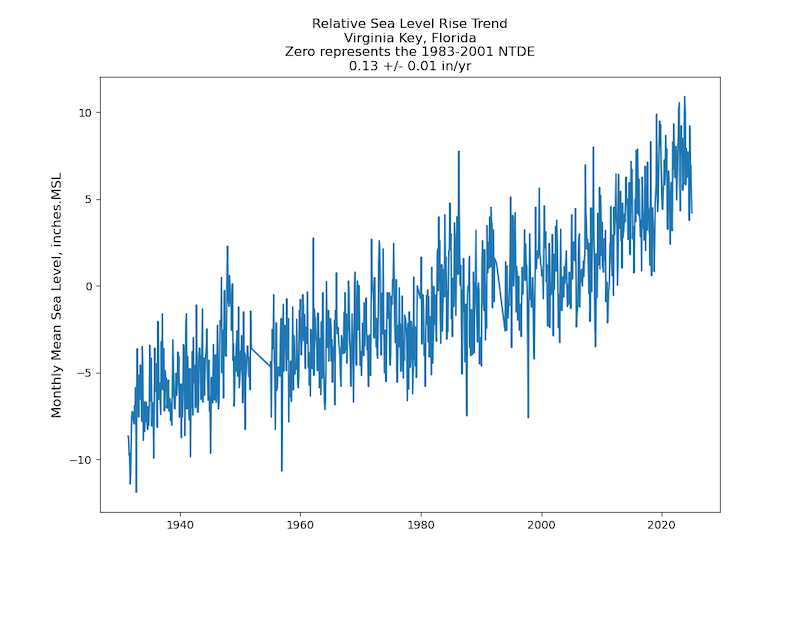
Monroe County, Observed Sea Level Rise
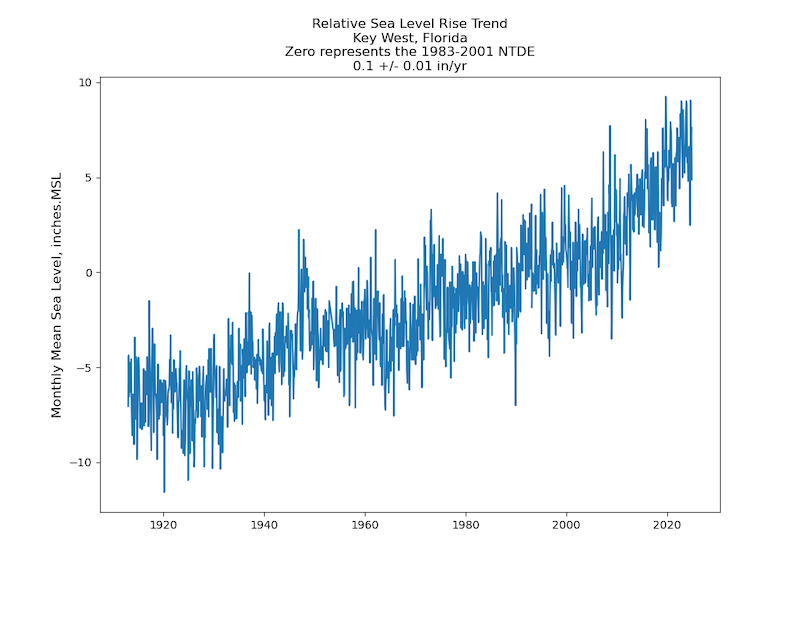
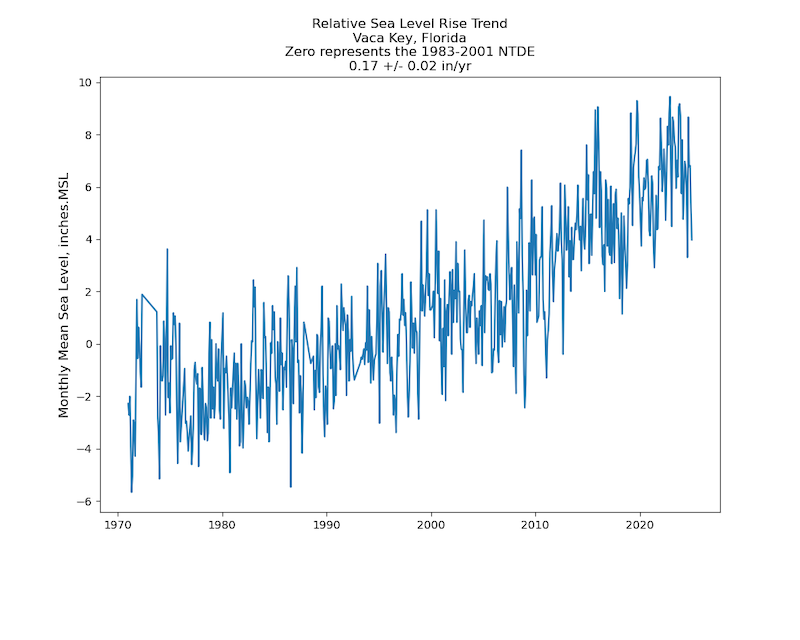
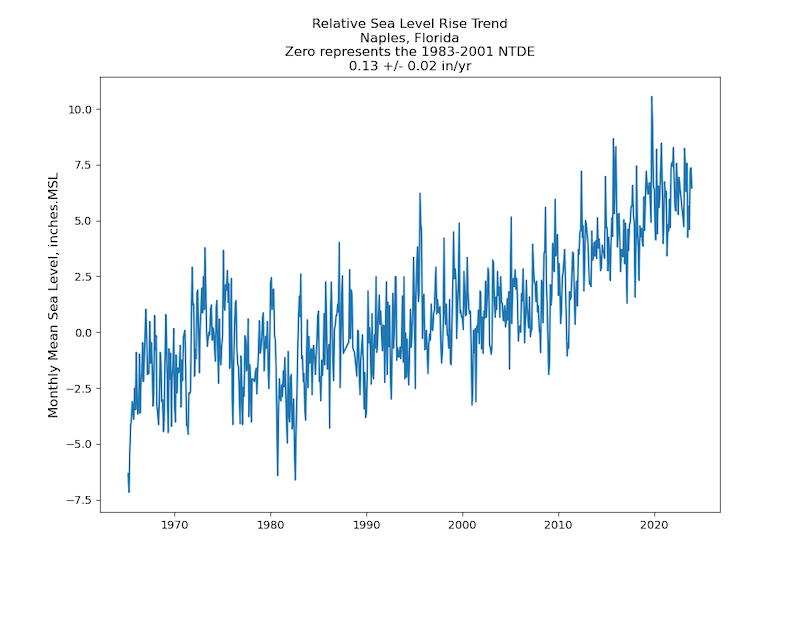
Palm Beach County, Observed Sea Level Rise
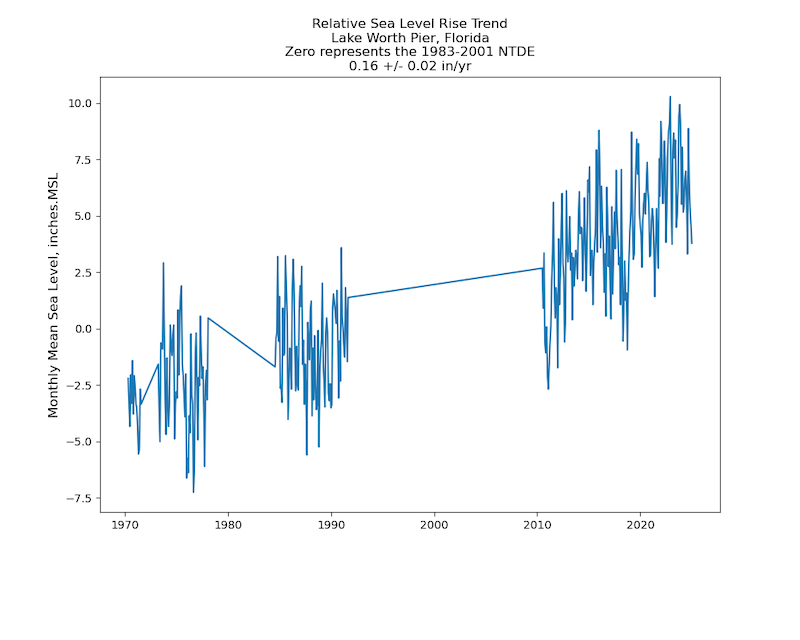
Projected Sea Level Rise
The Compact’s Regionally Unified Sea Level Rise Projection for Southeast Florida (updated in 2019) indicates that in the short term, sea level rise is projected to be 10 to 17 inches by 2040 and 21 to 54 inches by 2070 (above the 2000 mean sea level in Key West, Florida). In the long term, sea level rise is projected to be 40 to 136 inches by 2120.
In late 2024, the Compact undertook a review of its 2019 Regionally Unified Sea Level Rise Projection (“2019 Projection”) vis-à-vis updates from the NOAA 2022 Sea Level Rise Technical Report, as well as observational trends in the sea level in the region. Based on the review, the Compact issued guidance for the continued use of the 2019 Regionally Unified Projection in Southeast Florida as a basis for resilience planning, design, and construction.
Projected sea level rise, especially beyond 2070, has a significant range of variation as a result of uncertainty in future greenhouse gas emissions reduction efforts and resulting geophysical effects.
